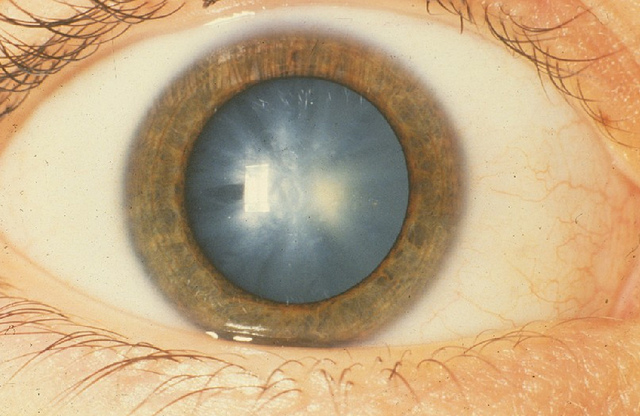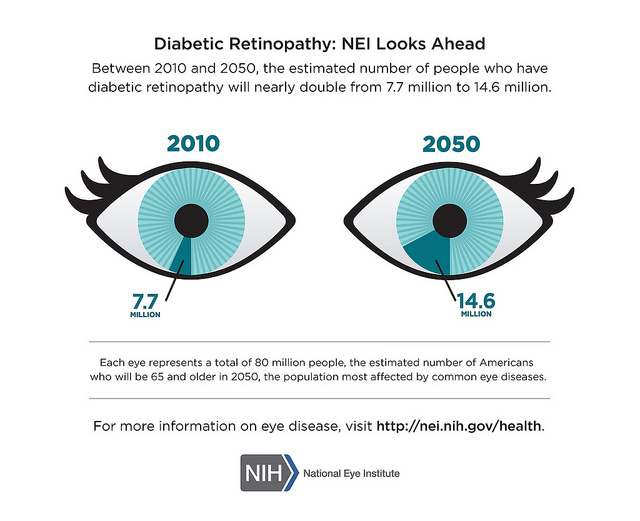Vision Issues for Diabetic Patients

In honor of Diabetes Awareness month, we wanted to make our patients aware of three common eye-related conditions diabetics may be at risk for developing.
Glaucoma
Glaucoma usually occurs because of a build-up of fluid in the eye, causing increased pressure. The pressure can damage the optic nerve, which sends images to the brain and helps people see. If glaucoma goes untreated, the pressure can cause permanent blindness. Symptoms include: severe headaches, eye pain, nausea, vomiting, blurred vision, eye redness, seeing halos around lights, blind spots in your vision or tunnel vision.
Those with diabetes are 40 percent more likely to develop glaucoma. Being over 40 years old and the length of time people have had diabetes also increases their risk of having glaucoma. There are several treatment options available, including medicated eye drops and surgery.
 Cataracts
Cataracts
A cataract is a clouding of the eye’s lens. It occurs when protein builds up on the lens, blocking light and making vision foggy. Warning signs include: cloudy/ blurry vision, colors appearing faded, seeing halos around lights, poor night vision, double vision or frequent prescription changes in your eyeglasses/contact lenses.
While cataracts typically occur in older people, diabetic patients are more likely to develop them at an earlier age. In the beginning stages of a developing cataract, new glasses, brighter lighting and anti-glare sunglasses may help ease symptoms. For more advanced cataracts, surgery may be required for removal.
Diabetic Retinopathy
Caused by damage to the blood vessels in the retina, diabetic retinopathy takes on two forms – nonproliferative and proliferative.

Nonproliferative Retinopathy
In the more common form, nonproliferative retinopathy, blood vessels in the back of the eye balloon and form pouches. In this early stage, patients may not experience any symptoms.
Proliferative Retinopathy
This form occurs after the condition has progressed. The blood vessels are closed off because they are seriously damaged. New, weaker vessels grow and may leak blood, which cloud vision. They can also cause scar tissue to develop, which can distort the retina or detach it.
Your doctor may monitor certain factors: your diet, exercise and blood sugar levels in order to prevent the condition from worsening. Laser treatments and surgery are other options if the disease has progressed.
All three of these conditions can be detected in a comprehensive eye exam from an optometrist. The Eye Institute provides specialized treatment plans for those with diabetes, glaucoma, cataracts and diabetic retinopathy.